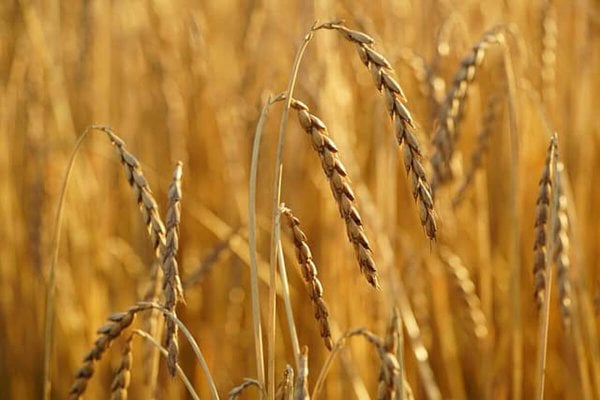We’ve been battling the grass in our terrace garden for years now and are finally hopeful that we’re winning the war. Join us for this podcast episode on how to get rid of grass in the garden as we discuss the problems, what we’ve tried, and what we’re doing now.

Grass vs. Gardens
When we first bought our homestead, the area just outside of the kitchen was the perfect location for a cottage garden. We turned our sod into a garden using the lasagna gardening method, and it worked wonderfully for the first few years.
I recommend you check out our blog post on the lasagna gardening method or our post with Paul Gautschi on the Back to Eden Gardening Method if you’re unfamiliar with the concept.
To summarize, the lasagna method looks like this:
- Mow and cut back the grass and/or weeds as short as possible using a lawn mower and weed wacker.
- Lay down a thick layer of construction paper, newspaper or cardboard (2-3 layers of construction paper or newspaper are more favorable than cardboard).
- Cover the paper or cardboard with 4-8 inches of soil/mulch.
- Plant your garden.
However, we had an oversight in that we thought having grass pathways going down the middle of the garden would be wonderful so you could stroll barefoot through the garden. Since our grass spreads underground by rhizomes, this was problematic and every spring I was found on hands and knees pulling up grass roots.

Common Problems With Grass
Some of the common mistakes we’ve found that result in grass growing where you don’t want it in the garden are as follows:
- Using Cardboard – As mentioned above, cardboard is less desirable than construction paper or newspaper since it’s stiffer and doesn’t conform to the bumps and grooves of the ground. Therefore, there are more air pockets that don’t allow the grass to get completely smothered. Paul Gautschi himself (creator of the Back to Eden Garden Method) actually recommends using the waxed construction paper because it breaks down a little slower and has a better success rate. You can find this at most home improvement/hardware stores.
- Not Using Edging – Not all grasses spread through their roots, but many do. If you don’t have something to block those roots from shooting out into your garden area, you will always struggle. We have hopefully fixed this issue by removing the grass from our pathway and laying out a flagstone path with deep 8-inch edging that goes down into the ground. We will continue to pull up any remaining grass that grows until it’s all been eliminated.
- Not Enough Mulch – If you’re truly trying to kill off grasses that spread through rhizomes it’s imperative that you top dress with at least 8 inches of mulch to smother it. This is a mistake we made, specifically in our asparagus bed, where we only added a few inches of mulch after digging up and removing the grass. The following years, those rhizomes spread and our grass issue was back.
- Burning – There are many people who use a flamethrower and burn away grasses and weeds. This works great for the year. However, this method only kills the weeds at the surface and doesn’t kill off the roots. Therefore, the weeds generally come back each year.

Eliminating Grass on Sloped Ground
With our terrace gardens, we tried our best to use the lasagna gardening method and eliminate the grass by planting clover as a ground cover (pictured above). Unfortunately, we didn’t mulch deeply enough (or use edging), and the grass slowly came back in and won out over the clover.
This year, we decided to resort to black landscape fabric. Though this isn’t our ideal method, it seems to be the best option for the large scale we’re working with.
We’ll cover the ground with the fabric, only creating holes to plant our crops. The landscape fabric will be left in place to cook and kill the grass for two years. Since we’re dealing with perennial grasses, this is necessary.
Many market gardeners do this faster by covering their garden rows for a couple of weeks to allow weed seeds to sprout and die before planting. This works great if you’re dealing with seeds, not roots.
The benefit of this black landscape fabric is that it’s creating a lot of heat on the slope of our gardens, so we’re using that to our benefit and growing plenty of winter squash to put up. We’re even growing extra as supplementary feed for the livestock.



















